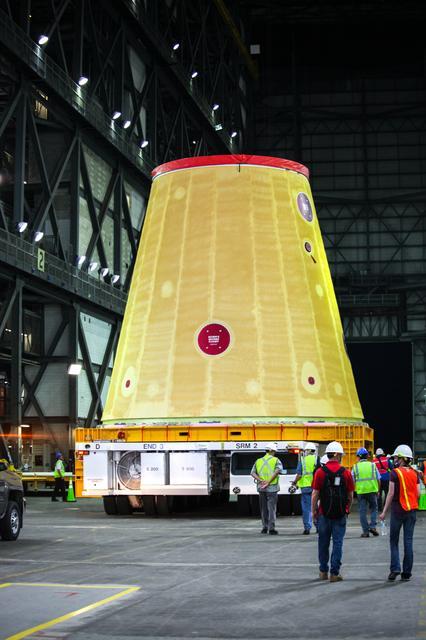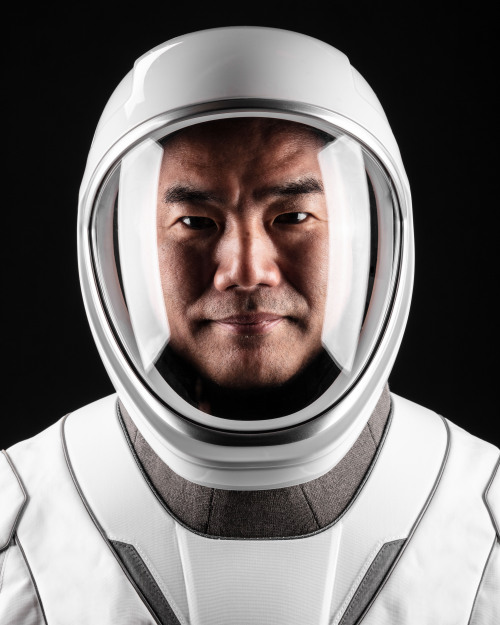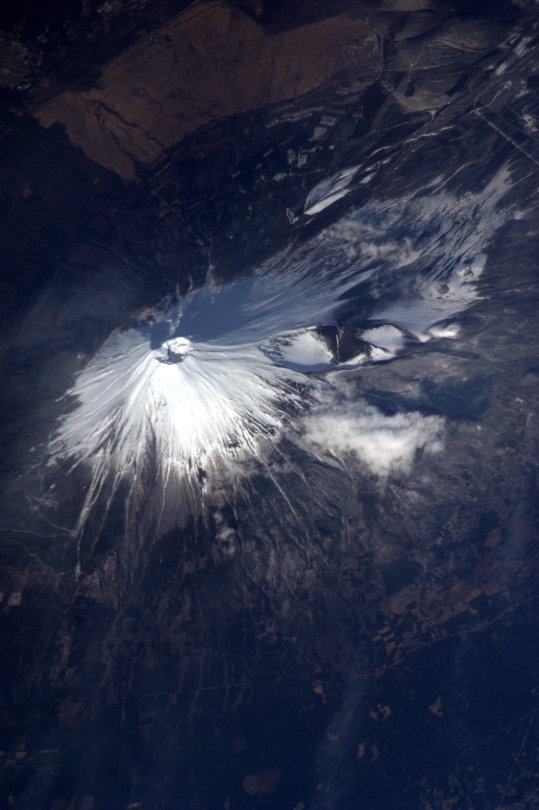Cosmic Alphabet Soup: Classifying Stars
Cosmic Alphabet Soup: Classifying Stars

If you’ve spent much time stargazing, you may have noticed that while most stars look white, some are reddish or bluish. Their colors are more than just pretty – they tell us how hot the stars are. Studying their light in greater detail can tell us even more about what they’re like, including whether they have planets. Two women, Williamina Fleming and Annie Jump Cannon, created the system for classifying stars that we use today, and we’re building on their work to map out the universe.

By splitting starlight into spectra – detailed color patterns that often feature lots of dark lines – using a prism, astronomers can figure out a star’s temperature, how long it will burn, how massive it is, and even how big its habitable zone is. Our Sun’s spectrum looks like this:

Astronomers use spectra to categorize stars. Starting at the hottest and most massive, the star classes are O, B, A, F, G (like our Sun), K, M. Sounds like cosmic alphabet soup! But the letters aren’t just random – they largely stem from the work of two famous female astronomers.

Williamina Fleming, who worked as one of the famous “human computers” at the Harvard College Observatory starting in 1879, came up with a way to classify stars into 17 different types (categorized alphabetically A-Q) based on how strong the dark lines in their spectra were. She eventually classified more than 10,000 stars and discovered hundreds of cosmic objects!

That was back before they knew what caused the dark lines in spectra. Soon astronomers discovered that they’re linked to a star’s temperature. Using this newfound knowledge, Annie Jump Cannon – one of Fleming’s protégés – rearranged and simplified stellar classification to include just seven categories (O, B, A, F, G, K, M), ordered from highest to lowest temperature. She also classified more than 350,000 stars!

Type O stars are both the hottest and most massive in the new classification system. These giants can be a thousand times bigger than the Sun! Their lifespans are also around 1,000 times shorter than our Sun’s. They burn through their fuel so fast that they only live for around 10 million years. That’s part of the reason they only make up a tiny fraction of all the stars in the galaxy – they don’t stick around for very long.

As we move down the list from O to M, stars become progressively smaller, cooler, redder, and more common. Their habitable zones also shrink because the stars aren’t putting out as much energy. The plus side is that the tiniest stars can live for a really long time – around 100 billion years – because they burn through their fuel so slowly.

Astronomers can also learn about exoplanets – worlds that orbit other stars – by studying starlight. When a planet crosses in front of its host star, different kinds of molecules in the planet’s atmosphere absorb certain wavelengths of light.
By spreading the star’s light into a spectrum, astronomers can see which wavelengths have been absorbed to determine the exoplanet atmosphere’s chemical makeup. Our James Webb Space Telescope will use this method to try to find and study atmospheres around Earth-sized exoplanets – something that has never been done before.

Our upcoming Nancy Grace Roman Space Telescope will study the spectra from entire galaxies to build a 3D map of the cosmos. As light travels through our expanding universe, it stretches and its spectral lines shift toward longer, redder wavelengths. The longer light travels before reaching us, the redder it becomes. Roman will be able to see so far back that we could glimpse some of the first stars and galaxies that ever formed.
Learn more about how Roman will study the cosmos in our other posts:
Roman’s Family Portrait of Millions of Galaxies
New Rose-Colored Glasses for Roman
How Gravity Warps Light
Make sure to follow us on Tumblr for your regular dose of space!
More Posts from Thehkr and Others

- ensuring we do not overwhelm our NHS
Throwback Thursday: Frequently Asked Questions about Apollo

In celebration of the 50th anniversary of Apollo 11, we’ll be sharing answers to some frequently asked questions about the first time humans voyaged to the Moon. Answers have been compiled from archivists in the NASA History Office.
How many people worked on the Apollo program?

At the height of Apollo in 1965, about 409,900 people worked on some aspect of the program, but that number doesn’t capture it all.
It doesn’t represent the people who worked on mission concepts or spacecraft design, such as the engineers who did the wind tunnel testing of the Apollo Command Module and then moved on to other projects. The number also doesn’t represent the NASA astronauts, mission controllers, remote communications personnel, etc. who would have transferred to the Apollo program only after the end of Gemini program (1966-1967). There were still others who worked on the program only part-time or served on temporary committees. In the image above are three technicians studying an Apollo 14 Moon rock in the Lunar Receiving Laboratory at Johnson Space Center. From left to right, they are Linda Tyler, Nancy Trent and Sandra Richards.
How many people have walked on the Moon so far?

This artwork portrait done by spaceflight historian Ed Hengeveld depicts the 12 people who have walked on the Moon so far. In all, 24 people have flown to the Moon and three of them, John Young, Jim Lovell and Gene Cernan, have made the journey twice.
But these numbers will increase.
Are the U.S. flags that were planted on the Moon still standing?

Every successful Apollo lunar landing mission left a flag on the Moon but we don’t know yet whether all are still standing. Some flags were set up very close to the Lunar Module and were in the blast radius of its ascent engine, so it’s possible that some of them could have been knocked down. Neil Armstrong and Buzz Aldrin both reported that the flag had been knocked down following their ascent.

Our Lunar Reconnaissance Orbiter took photographs of all the Apollo lunar landing sites. In the case of the Apollo 17 site, you can see the shadow of the upright flag.
But why does it look like it’s waving?

The flags appear to “wave” or “flap” but actually they’re swinging. Swinging motions on Earth are dampened due to gravity and air resistance, but on the Moon any swinging motion can continue for much longer. Once the flags settled (and were clear of the ascent stage exhaust), they remained still. And how is the flag hanging? Before launching, workers on the ground had attached a horizontal rod to the top of each flag for support, allowing it to be visible in pictures and television broadcasts to the American public. Armstrong and Aldrin did not fully extend the rod once they were on the Moon, giving the flag a ripple effect. The other astronauts liked the ripple effect so much that they also did not completely extend the rod.
Why don’t we see stars in any of the pictures?

Have you ever taken a photo of the night sky with your phone or camera? You likely won’t see any stars because chances are your camera’s settings are set to short exposure time only lets it quickly take in the light off the bright objects closest to you. It’s the same reason you generally don’t see stars in spacewalk pictures from the International Space Station. There’s no use for longer exposure times to get an image like this one of Bruce McCandless in 1984 as seen Space Shuttle Challenger (STS-41B).
The Hasselblad cameras that Apollo astronauts flew with were almost always set to short exposure times. And why didn’t the astronauts photograph the stars? Well, they were busy exploring the Moon!
When are we going back to the Moon?

The first giant leap was only the beginning. Work is under way to send the first woman and the next man to the Moon in five years. As we prepare to launch the next era of exploration, the new Artemis program is the first step in humanity’s presence on the the Moon and beyond.
Keep checking back for more answers to Apollo FAQs.
Make sure to follow us on Tumblr for your regular dose of space: http://nasa.tumblr.com.

Time to get away… with her…


The Big Build: Artemis I Stacks Up
Our Space Launch System (SLS) rocket is coming together at the agency’s Kennedy Space Center in Florida this summer. Our mighty SLS rocket is set to power the Artemis I mission to send our Orion spacecraft around the Moon. But, before it heads to the Moon, NASA puts it together right here on Earth.

Read on for more on how our Moon rocket for Artemis I will come together this summer:
Get the Base

How do crews assemble a rocket and spacecraft as tall as a skyscraper? The process all starts inside the iconic Vehicle Assembly Building at Kennedy with the mobile launcher. Recognized as a Florida Space Coast landmark, the Vehicle Assembly Building, or VAB, houses special cranes, lifts, and equipment to move and connect the spaceflight hardware together. Orion and all five of the major parts of the Artemis I rocket are already at Kennedy in preparation for launch. Inside the VAB, teams carefully stack and connect the elements to the mobile launcher, which serves as a platform for assembly and, later, for fueling and launching the rocket.
Start with the boosters

Because they carry the entire weight of the rocket and spacecraft, the twin solid rocket boosters for our SLS rocket are the first elements to be stacked on the mobile launcher inside the VAB. Crews with NASA’s Exploration Ground Systems and contractor Jacobs team completed stacking the boosters in March. Each taller than the Statue of Liberty and adorned with the iconic NASA “worm” logo, the five-segment boosters flank either side of the rocket’s core stage and upper stage. At launch, each booster produces more than 3.6 million pounds of thrust in just two minutes to quickly lift the rocket and spacecraft off the pad and to space.
Bring in the core stage

In between the twin solid rocket boosters is the core stage. The stage has two huge liquid propellant tanks, computers that control the rocket’s flight, and four RS-25 engines. Weighing more than 188,000 pounds without fuel and standing 212 feet, the core stage is the largest element of the SLS rocket. To place the core stage in between the two boosters, teams will use a heavy-lift crane to raise and lower the stage into place on the mobile launcher.
On launch day, the core stage’s RS-25 engines produce more than 2 million pounds of thrust and ignite just before the boosters. Together, the boosters and engines produce 8.8 million pounds of thrust to send the SLS and Orion into orbit.
Add the Launch Vehicle Stage Adapter

Once the boosters and core stage are secured, teams add the launch vehicle stage adapter, or LVSA, to the stack. The LVSA is a cone-shaped element that connects the rocket’s core stage and Interim Cryogenic Propulsion Stage (ICPS), or upper stage. The roughly 30-foot LVSA houses and protects the RL10 engine that powers the ICPS. Once teams bolt the LVSA into place on top of the rocket, the diameter of SLS will officially change from a wide base to a more narrow point — much like a change in the shape of a pencil from eraser to point.
Lower the Interim Cryogenic Propulsion Stage into place

Next in the stacking line-up is the Interim Cryogenic Propulsion Stage or ICPS. Like the LVSA, crews will lift and bolt the ICPS into place. To help power our deep space missions and goals, our SLS rocket delivers propulsion in phases. At liftoff, the core stage and solid rocket boosters will propel Artemis I off the launch pad. Once in orbit, the ICPS and its single RL10 engine will provide nearly 25,000 pounds of thrust to send our Orion spacecraft on a precise trajectory to the Moon.
Nearly there with the Orion stage adapter

When the Orion stage adapter crowns the top of the ICPS, you’ll know we’re nearly complete with stacking SLS rocket for Artemis I. The Orion Stage Adapter is more than just a connection point. At five feet in height, the Orion stage adapter may be small, but it holds and carries several small satellites called CubeSats. After Orion separates from the SLS rocket and heads to the Moon, these shoebox-sized payloads are released into space for their own missions to conduct science and technology research vital to deep space exploration. Compared to the rest of the rocket and spacecraft, the Orion stage adapter is the smallest SLS component that’s stacked for Artemis I.
Top it off

Finally, our Orion spacecraft will be placed on top of our Moon rocket inside the VAB. The final piece will be easy to spot as teams recently added the bright red NASA “worm” logotype to the outside of the spacecraft. The Orion spacecraft is much more than just a capsule built to carry crew. It has a launch abort system, which will carry the crew to safety in case of an emergency, and a service module developed by the European Space Agency that will power and propel the spacecraft during its three-week mission. On the uncrewed Artemis I mission, Orion will check out the spacecraft’s critical systems, including navigation, communications systems, and the heat shield needed to support astronauts who will fly on Artemis II and beyond.
Ready for launch!

The path to the pad requires many steps and check lists. Before Artemis I rolls to the launch pad, teams will finalize outfitting and other important assembly work inside the VAB. Once assembled, the integrated SLS rocket and Orion will undergo several final tests and checkouts in the VAB and on the launch pad before it’s readied for launch.
The Artemis I mission is the first in a series of increasingly complex missions that will pave the way for landing the first woman and the first person of color on the Moon. The Space Launch System is the only rocket that can send NASA astronauts aboard NASA’s Orion spacecraft and supplies to the Moon in a single mission.
Make sure to follow us on Tumblr for your regular dose of space!




How was it possible for the world to be so beautiful and so cruel at the same time?
Gillian Rubinstein (via quotemadness)


NASA Spotlight: Astronaut Soichi Noguchi
Soichi Noguchi was selected as an astronaut with the Japan Aerospace Exploration Agency in 1996. A native of Yokohama, Kanagawa, he is currently a mission specialist for NASA’s SpaceX Crew-1 launch taking flight to the International Space Station on Nov. 14. Soichi will be the first international crewmember on Crew Dragon and the first international partner astronaut to fly aboard three types of orbital spacecraft – the U.S. space shuttle, the Russian Soyuz, and now the SpaceX Crew Dragon! Talk about impressive. He received a B.S. in Aeronautical Engineering in 1989, master’s degree in Aeronautical Engineering in 1991, Doctor of Philosophy in Advanced Interdisciplinary Studies in 2020, all from the University of Tokyo.
Soichi took time from preparing for his historic mission to answer questions about his life and career:
You recently earned a doctorate in philosophy. What made you do it?
After my second flight, I started this research about your sensory system in zero gravity. I used a my own personal video, which I took during my last two flights at the International Space Station. I had a lot of interesting discussions amongst young professionals and students at the University of Tokyo about the research. It was a fun experience – but I would not do it again!
Space is a risky business. Why do it?
Space IS definitely a risky business. But the reward is higher than the risk so that’s why we take it.
Do you have a message for boys and girls in Japan who are interested in science and engineering?
Three words: Space. Is. Waiting.

Aside from mission objectives and tasks, what’s a personal goal for this mission?
We have a lot of interesting missions to do, but my personal goal is to return home with lots of fun stories.

What was it like to get the phone call to become an astronaut?
It was 25 years ago, but I still remember the voice vividly. I got a call from Dr. Mamoru Mohri, the very first JAXA astronaut, and he said “Welcome to the Astronaut Corps.” When I got the call to be part of the Crew-1 mission, I was a lot less nervous than when I was assigned to my first mission, but the excitement remains the same.
Can you describe your crew mate Mike Hopkins in one sentence?
He is a natural leader that takes care of the team really well, and he’s fun to play around with.

Star Trek or Star Wars?
Star Wars… just because!

Can you share your favorite photo or video that you took in space?
My favorite photo is Mount Fuji because I see the mountain almost every day when I was a child. It’s definitely breathtaking to see Mount Fuji from space.

What personal items did you decide to pack for launch and why?
I have lots of family photos, and I would put it inside my sleep station. Definitely one of the most challenging things about spaceflight is not experiencing zero gravity, not the rocket, but time away from family.
How would you describe spacewalking outside the space station?
It’s an excursion. The view of the Earth is just breathtaking because you are just one glass away from the vacuum of space. There’s nothing between you and Earth.

What are you most excited about for the future of human space exploration?
I would say I’m most excited for interplanetary travel to become more common so that the school kids can go to Mars on their field trip.
What would you say to someone looking to follow in your footsteps?
Don’t worry, be happy!
How has spaceflight evolved since your first launch and stay aboard the International Space Station in 2005?
This is definitely an exciting moment. We’re starting to see more players in the game. SpaceX is the frontrunner, but soon we’ll see Boeing, Sierra Nevada and Axiom. So the International Space Station will soon have more players involved, and it will be a lot more fun!
Thank you for your time, Soichi, and good luck on your historic mission! Get to know a bit more about Soichi and his NASA astronaut crew mates Victor Glover, Michael Hopkins, and Shannon Walker in the video above.
Watch LIVE launch coverage beginning at 3:30 p.m. EST on Nov. 14 HERE.
Make sure to follow us on Tumblr for your regular dose of space: http://nasa.tumblr.com
-
 waiting-eyez liked this · 2 months ago
waiting-eyez liked this · 2 months ago -
 kowvo reblogged this · 7 months ago
kowvo reblogged this · 7 months ago -
 bo-ink liked this · 7 months ago
bo-ink liked this · 7 months ago -
 suga-catt reblogged this · 7 months ago
suga-catt reblogged this · 7 months ago -
 suga-catt liked this · 7 months ago
suga-catt liked this · 7 months ago -
 sporemiette liked this · 7 months ago
sporemiette liked this · 7 months ago -
 heartclutter reblogged this · 7 months ago
heartclutter reblogged this · 7 months ago -
 annita89slyzpqlkh liked this · 7 months ago
annita89slyzpqlkh liked this · 7 months ago -
 haz77zard liked this · 9 months ago
haz77zard liked this · 9 months ago -
 unieetsearthquake686 liked this · 1 year ago
unieetsearthquake686 liked this · 1 year ago -
 brisadebird736 liked this · 1 year ago
brisadebird736 liked this · 1 year ago -
 artemisdio liked this · 1 year ago
artemisdio liked this · 1 year ago -
 lululumune liked this · 1 year ago
lululumune liked this · 1 year ago -
 azufres reblogged this · 1 year ago
azufres reblogged this · 1 year ago -
 estefanyailen liked this · 1 year ago
estefanyailen liked this · 1 year ago -
 crispygarlick liked this · 1 year ago
crispygarlick liked this · 1 year ago -
 lillekins reblogged this · 1 year ago
lillekins reblogged this · 1 year ago -
 stargazerlillian liked this · 1 year ago
stargazerlillian liked this · 1 year ago -
 herhideoutturtle liked this · 1 year ago
herhideoutturtle liked this · 1 year ago -
 ad-astra-affecte-spe reblogged this · 1 year ago
ad-astra-affecte-spe reblogged this · 1 year ago -
 ignoinnoni liked this · 1 year ago
ignoinnoni liked this · 1 year ago -
 nekomansir liked this · 1 year ago
nekomansir liked this · 1 year ago -
 fuckneckdipm8 reblogged this · 1 year ago
fuckneckdipm8 reblogged this · 1 year ago -
 whitestnoise reblogged this · 1 year ago
whitestnoise reblogged this · 1 year ago -
 emgamocosi liked this · 1 year ago
emgamocosi liked this · 1 year ago -
 layer-10-love liked this · 1 year ago
layer-10-love liked this · 1 year ago -
 0-1-777 liked this · 1 year ago
0-1-777 liked this · 1 year ago -
 neuvirtualoasis reblogged this · 1 year ago
neuvirtualoasis reblogged this · 1 year ago -
 khushiyanhikhushiyan liked this · 1 year ago
khushiyanhikhushiyan liked this · 1 year ago -
 daisymayreadz liked this · 1 year ago
daisymayreadz liked this · 1 year ago -
 jibsdchidebchi liked this · 1 year ago
jibsdchidebchi liked this · 1 year ago -
 cbsblog liked this · 1 year ago
cbsblog liked this · 1 year ago -
 dmresstuff liked this · 1 year ago
dmresstuff liked this · 1 year ago -
 sailorsenshisweetheart liked this · 1 year ago
sailorsenshisweetheart liked this · 1 year ago -
 user-4725 liked this · 1 year ago
user-4725 liked this · 1 year ago -
 lesfleursrouges liked this · 1 year ago
lesfleursrouges liked this · 1 year ago -
 anxiousdepessedartist liked this · 2 years ago
anxiousdepessedartist liked this · 2 years ago -
 dangeroussciencebiologydonut liked this · 2 years ago
dangeroussciencebiologydonut liked this · 2 years ago -
 ayearofgoodfate reblogged this · 2 years ago
ayearofgoodfate reblogged this · 2 years ago -
 ayearofgoodfate liked this · 2 years ago
ayearofgoodfate liked this · 2 years ago